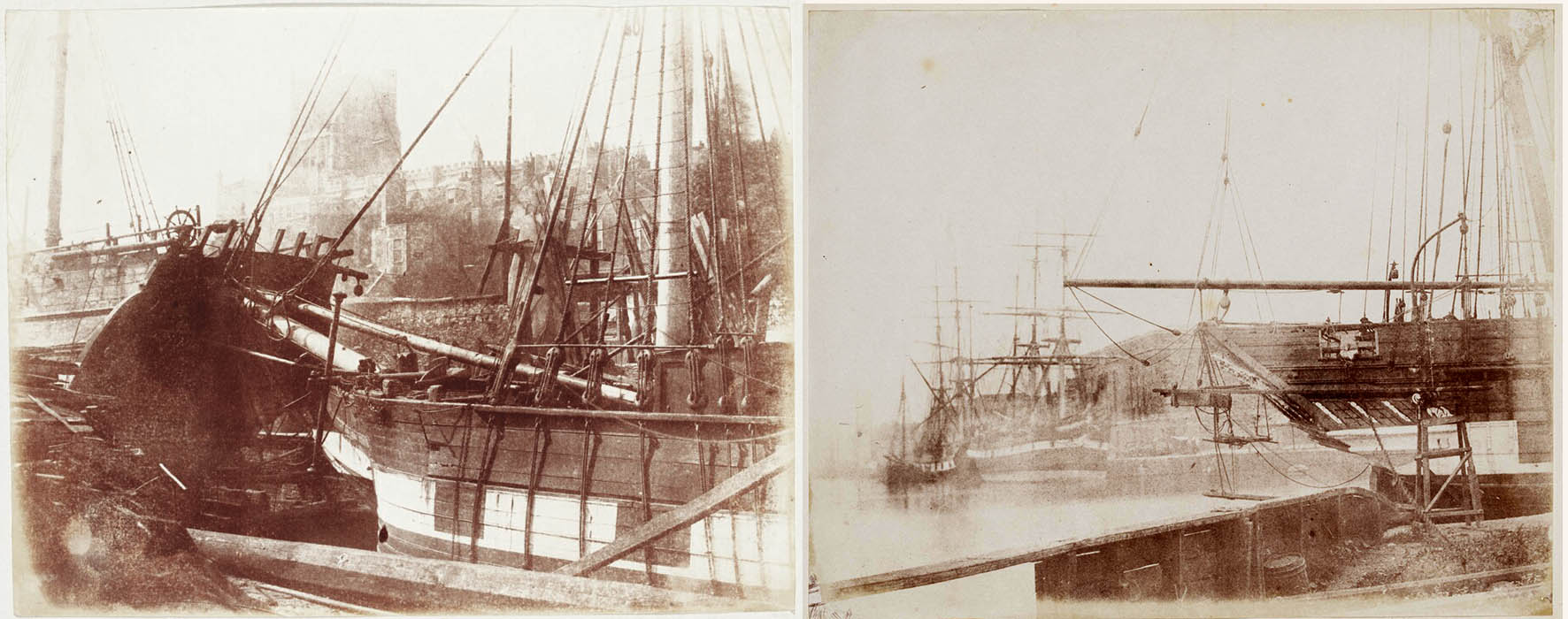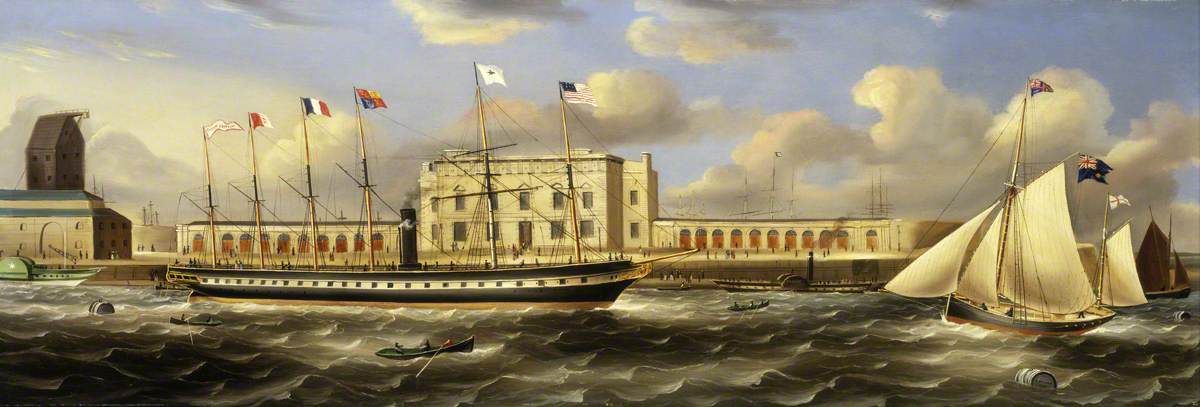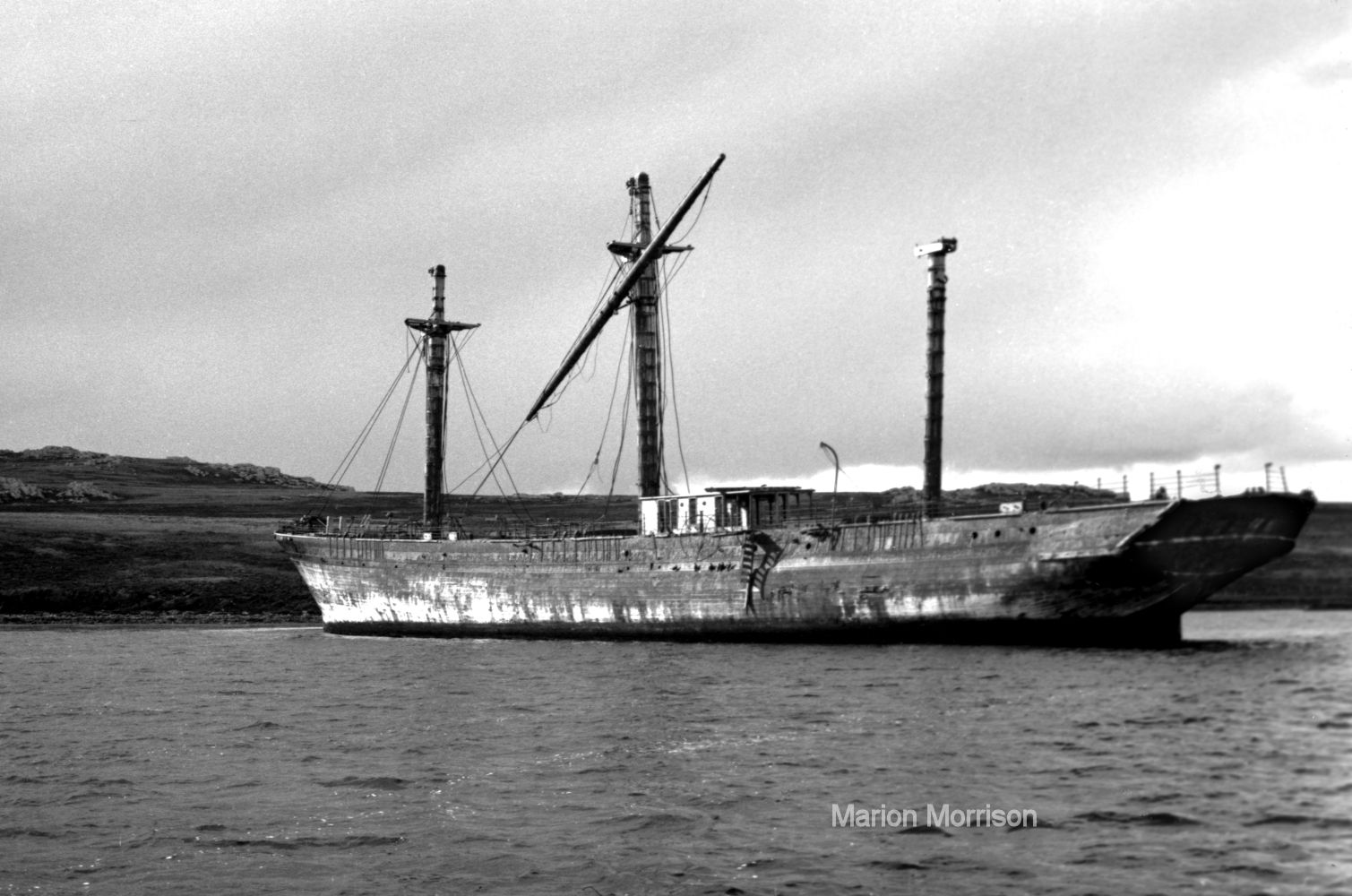 Rose Teanby, our resident Isambard Kingdom Brunel expert, now turns her attention from London’s Hungerford Bridge to another aspect of the interaction between Henry Talbot and the famed Victorian engineer. If you have yet to read the correspondence between them, I suggest that you have a look at the struggle between two men who shared a technical love of the emerging railway technology while being separated by diametrically opposite views of the future of Britain’s landscape.
Rose Teanby, our resident Isambard Kingdom Brunel expert, now turns her attention from London’s Hungerford Bridge to another aspect of the interaction between Henry Talbot and the famed Victorian engineer. If you have yet to read the correspondence between them, I suggest that you have a look at the struggle between two men who shared a technical love of the emerging railway technology while being separated by diametrically opposite views of the future of Britain’s landscape.
guest post by Rose Teanby
In 1934, Matilda Talbot donated to Greenwich’s National Maritime Museum a tiny calotype negative, trimmed to barely 6×7 cm. Although part of a larger donation, the Museum staff would have been particularly excited by this negative and its matching print, for it represented the earliest photograph of any identified ship, positively dated and afloat. Designed by Isambard Kingdom Brunel (1806-1859), the SS Great Britain was the world’s first all iron steamship, the predecessor of better-known vessels such as the SS Great Eastern, the Titanic and the Lusitania.
One of the greatest gifts provided by Talbot’s invention was the ability to document ephemeral moments but sometimes the significance of these captures was revealed only after the passage of time. This image of the SS Great Britain such an example. We take photography for granted, its capability to freeze and rekindle memories are just part of everyday life. But this single photographic image became the catalyst for extraordinary human endeavour, conquering seemingly insurmountable challenges in a shared determination to help an old ship complete her final voyage.
Like a salmon returning to its spawning ground, the SS Great Britain is now restored and resplendent in her dry dock in Bristol, but her remarkable story began in July 1839, just months after Henry Talbot announced photogenic drawing to the world and before Louis Jacques Mandé Daguerre revealed the working details of his process. Thirty miles west of Talbot’s Wiltshire home of Lacock Abbey the keel of the largest ship in the world was being laid, and construction of the hull of the SS Great Britain commenced.
Initially planned as a wooden sister to Brunel’s first transatlantic steamship, the SS Great Western, the new vessel instead demonstrated a revolutionary all iron structure, incorporating an array of technical innovations uniquely developed during her creation. Talbot favoured the modern, so she was a perfect subject for the new art when the camera captured her in 1844, ten months after her triumphant launch overseen by Prince Albert.
But this image is actually a maritime mirage. In 1969, the distinguished naval architect Dr Ewan Corlett carried out extensive research into this 1844 photograph, laying the groundwork for his involvement in the successful salvage of a ship he regarded as a landmark in maritime history. Dr Corlett established the ship’s position and date based on contemporary reports, the near completion of the fitting progress and his close observation of the distinctive Bristol terrain. At the time of this photograph, she should have been steaming across the Atlantic on her momentous inaugural voyage. But the pioneering ship had become a prisoner of her own creation within Bristol’s Floating Harbour at Brandon Wharf due to her sheer size, which exceeded the width of locks, preventing her from joining the tidal river Avon. The date was May 1844.
The date and position were now established but the photographer was less certain. Matilda Talbot would have retrieved it from the archives in Lacock Abbey, but no reference to this revolutionary ship has been found in Henry Talbot’s letters or diaries. In fact, during spring and summer of 1844, he spent much of his time not at Lacock Abbey, but in the opposite direction from Bristol, in London. Like so many other negatives, did Talbot acquire this from his close friend, the Rev Calvert R Jones (1802-1877)? Bristol and its environs regularly featured in Jones’s choice of photographic themes, for photographs of harbour vessels, usually aground, rarely afloat, were the staple of his watercolours.
The SS Great Britain’s launch on 19 July 1843 had been a day of splendour and celebration. A banquet was prepared for 600 guests and a special Royal train from Paddington to Bristol carried the Prince Consort, accompanied by Brunel. The ship successfully made the short journey from dry dock into the Floating Harbour, but there she remained for the next eighteen months.
On 27 April 1844 the Bristol Mercury considered the lamentable situation, asking “what is to be done with the Great Britain?’, feeling that the imprisonment of the ship was but a “lame and impotent conclusion” to such great doings. It is the step from the sublime to the ridiculous.” According to an advertisement in Gore’s Liverpool General Advertiser, the SS Great Britain had planned to steam to New York on 25 May 1844, but on that day she remained entombed far from the Atlantic ocean.
Perhaps such news reports prompted Talbot or Jones to visit Brandon Wharf, taking advantage of her forced captivity to capture a normally moving subject? Many visitors to Brandon Wharf were happy to pay their shilling for a privileged tour of this “noble ship, the wonder of the world”. To photograph such a trailblazing steamship in calm Bristol waters was an opportunity too good to miss.
A year after her grand floating, the Bristol Mercury publicised a report by Brunel arguing in favour of the widening the south lock to either 52 or 60 feet. This would potentially prevent loss of valuable trade to the easier access of Liverpool docks and also release his precious ship from her frustrating captivity.
The unexpectedly difficult birth of this “grand experiment” was eventually made possible with the cooperation of the Bristol Dock Company, enabling her escape into Cumberland Basin and out onto the river Avon at high tide. This was the second highest tidal river in the world, rising and falling by 30 feet, fluctuating from fast flowing river to sluggish muddy stream. A ship could easily run aground if their entry to the Avon was mis-timed. Lock widening didn’t start until October, with a suitable combination of tides and personal intervention by Brunel, enabling her belated escape from Cumberland Basin on 11 December 1844.
She was fitted with engines and rigging in Bristol and from there completed an essential trial voyage, testing the innovative partnership of steam and sail. Brunel had ordered her internal cabin furnishings and passenger area fittings from suppliers in London so her next stop was there to install the furniture SS Great Britain arrived at Brunswick Pier, Blackwall in London on 26 January 1845, concluding a challenging journey from Bristol through gales and “mountainous waves”. Richard Ball Spencer’s painting illustrates the newly fitted ship in turbulent Thames waters at Blackwall, impossible to capture by the limitation of lengthy exposure times necessary for early calotype photography. London was to be her “experimental trip” where the public could tour this magnificent vessel before her working life traversing the Atlantic began.
On 22 April 1845 Queen Victoria and Prince Albert visited the ship, recorded in her private journal–
“…set off for Greenwich, to visit the “Great Britain”. The sight was a beautiful one. — all the old Pensioners & Boys out, & a great crowd, — splendid weather. Got into our barge & embarked in the little steam-tender “Dwarf”, proceeding up to Blackwall, the Ld Mayor preceding us in his fine gilt barge decked out with innumerable flags, & towed along. Quantities of steamers & boats, crowded with people followed us, so that we felt very thankful not to be in a barge. We stepped from the “Dwarf” on to a platform, to which accommodation, stairs had been fixed, to enable us to get on board the Gt Britain” which is an enormous ship, 322 ft in length & a 16th of a mile round; she is at least 100 ft longer than any of our largest Men of War. We examined the engines (screws, not paddles) which are beautiful. The Dining Saloon is immense & the lounges for passengers, on both decks, are very large. The berths are very small, but there are nearly 300 of them! The contrivances & securities against danger are extremely ingenious. All the fittings & decorations are very fine, & everything made as comfortable as possible, but I should not much care to go to sea, with such a quantity of passengers, or in such a long, narrow ship.”
The Great Britain Steamship did not appear in the Pencil of Nature, published in June 1844, introducing plates “impressed by the agency of light alone”, but Henneman’s records show healthy sales of the sun picture, Great Britain Steamship by March 1845. Her fame spread in 1846 with her inclusion as one of the photographs bound into the Art-Union journal.
SS Great Britain led an eventful life, assuming many identities as a transatlantic passenger liner, emigrant clipper to Australia, troop carrier to Crimea and cargo supplier to the west coast of America. After 41 years at sea and sailing 32 times round the world, she was sold to the Falkland Islands Company as a coal storage hulk and finally abandoned in 1937.
The forlorn hulk was photographed at Sparrow Cove, Falkland Islands in 1969 by Marion Morrison, in a similar position but in stark contrast to the 1844 Brandon Wharf image. That year, a remarkable rescue mission was proposed and after necessary conservation to prevent complete disintegration, she was floated onto a large pontoon in the protective waters of Sparrow Cove. Leaving only her mizzen mast behind as a memento of her temporary residence in South Atlantic waters, she then braved an 8,000 mile journey back to England, and after two months at sea she finally entered the River Avon at Bristol. The damaged hull was repaired to release her from the pontoon and return to the Great Western Dockyard on 19 July 1970, exactly 127 years since Prince Albert smashed champagne against her hull at the launch.
Accompanied by a flotilla of tug boats, she floated underneath Brunel’s chains of the Clifton Suspension Bridge for the first and last time simultaneously. Bristolians threw flowers from the iconic bridge, completed twenty years after the SS Great Britain left Bristol, in December 1844.
Just a month ago I stood near the same spot at the stone built wharf, now replacing the beach in the foreground of the SS Great Britain in 1844, to add my contribution to her photographic legacy. The calotype and my digital panorama were separated by 173 years, but their pairing showed the mere eighty yards displacement of this extraordinary ship from her launch at Brandon Wharf to her 21st century berth in the dry dock at Great Western Dockyard. In between, Brunel’s SS Great Britain had travelled more than a million nautical miles.
Remarkably few photographs have been traced of this radical ship. More than two decades separated the Brandon Wharf calotype and the next recorded photograph at anchor in Melbourne, Australia, in 1866 taken by English émigré photographer William Davies. The 1844 image of SS Great Britain was to presage the famous photographs of Brunel’s later venture into naval engineering, the SS Great Eastern. Many of Robert Howlett’s astonishing 1857 images resulted from her extended time on dry land, due to a catastrophic failure to launch Brunel’s colossal “Great Babe”. The 1844 calotype of Brunel’s first cutting edge iron ship about to embark on her great adventure is an optimistic vision of the future, full of promise, reprised by Tony and Marion Morrison in their 1970 photographs of her emotional homecoming. The purpose of photography is to preserve a moment in time, moments that will never return but can be re-lived through a calotype, or a modern colour print showing the astonishing commitment to bringing the abandoned ship back home again. Talbot’s 1839 invention of photography, like the SS Great Britain, had come full circle.
Rose Teanby
• Questions or Comments? Please contact digitalsupport@bodleian.ox.ac.uk. The author would like to thank Meg Aherne and David Greenfield for additional research contributions and Nick Booth, Collections Manager at the Brunel Institute, SS Great Britain. • In 1970, as part of its ‘Chronicle’ series, the BBC broadcast The Great Iron Ship – SS Great Britain Rescue. • Attributed to Calvert R Jones (traditionally to WHFT), SS Great Britain at Bristol; vessel at low tide, National Maritime Museum, P01CAL. Modern digitisation of their Matilda Talbot donation is scheduled for the near future – both images presented here are digitally derived from older copy prints; Schaaf no. 937. • Calvert R Jones, Ships in Green’s dry dock, Dean’s Marsh, Bristol, salted paper print from a calotype negative, Victoria and Albert Museum, Ph.41-1983; Schaaf 4090. Calvert R Jones, Ships in Dock, Bristol, salted paper print from a calotype negative, Victoria And Albert Museum, Ph.58-1983; Schaaf 4105. • Richard Ball Spencer, SS ‘Great Britain’ at Brunswick Wharf, Blackwall, oil painting, mid-19th c, National Maritime Museum, Ref: ZBA0738. • Queen Victoria’s journal is in the Royal Archives, Windsor, RA VIC/MAIN/QVJ (W) 22 April 1845. • Marion Morrison, Hulk of SS Great Britain in Sparrow Cove, Falkland Islands, 1969. • Marion Morrison, SS Great Britain passing under the Clifton Bridge, 19 July 1970. • Rose Teanby, Panorama of Brandon’s Wharf, Bristol, December 2017.







